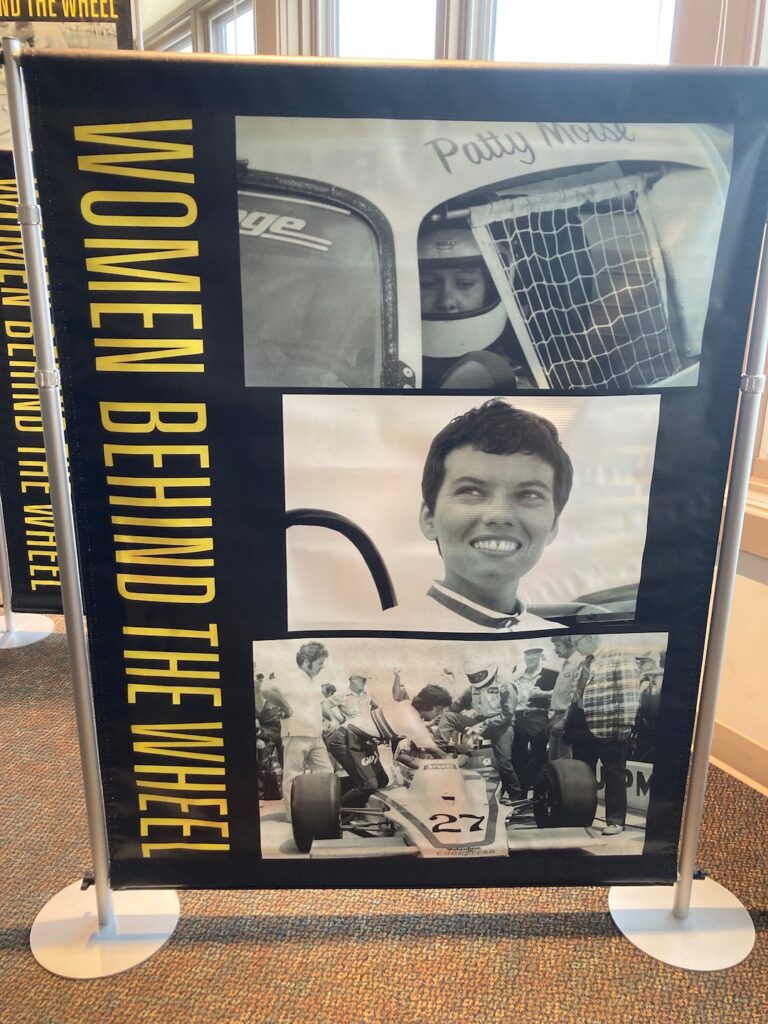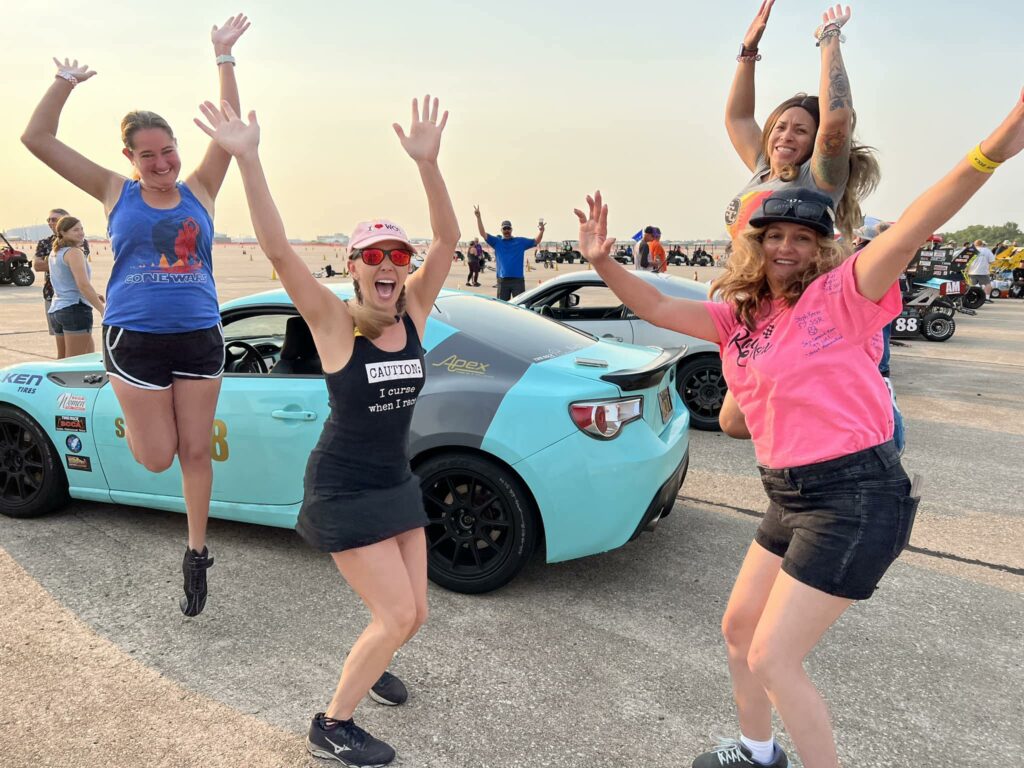This past weekend I had the opportunity to visit the Gilmore Car Museum in Hickory Corners, Michigan as part of my newest project that focuses on women’s representation in automotive museums and collections. I last visited the Gilmore a number of years ago during a muscle car event as part of research conducted for my book. As that car show was held outdoors, I never had an opportunity to explore the many buildings on the expansive Gilmore complex.

The Gilmore Museum was originally established in the early 1960s as a place to store and display the growing automobile collection of Donald Gilmore. Although the museum has grown significantly since that time, inhabiting a number of buildings on the 90 acre parcel, it is still very much a collector’s museum, centered on the particular automotive interests of its founder. While the collection includes popular cars from the 1950s and 60s, the overwhelming majority of vehicles on display hail from the early auto age. Not only are there rooms in the main building devoted to steam powered automobiles, the Franklin Automobile Company of the early 20th century, cars of the 1920s and 30s, as well as early Lincoln models, but there are separate on site buildings featuring the Ford Model A and Cadillac LaSalle. These automobiles represent eras in which automobile production and car culture participation was very much a white male enterprise. This narrow focus on a particular automotive experience is no doubt responsible for the invisibility of women as owners, drivers, or influencers within the automotive collections and exhibitions. The introductory video – which visitors view before entering the museum – states that the museum’s mission is ‘to tell the story of America through the automobile.’ However, the stories that are told – beginning with those of the youngest car enthusiast – are filtered through a determinedly male perspective.
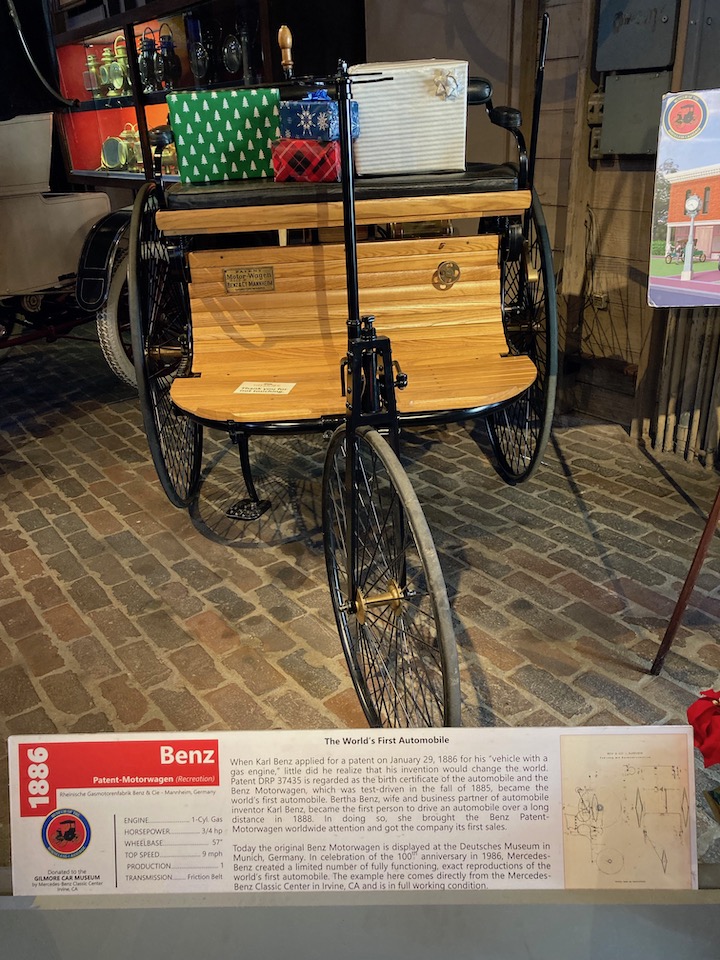
Of the over 400 cars currently on display, only a handful have any female reference. One of those is the 1886 Benz. Bertha Benz, the wife and business partner of automobile inventor Karl Benz, is recognized as the first person to drive an automobile over a long distance. In doing so, notes the display placard, she brought the Benz Patent-Motorwagen worldwide attention and got the company its first sales. Mrs. Benz is often rightly regarded as an ‘exceptional’ woman in automotive history, as both an influencer and outspoken proponent of women’s automobility.
The only other car directly linked to a woman is a 1971 Dodge Challenger Convertible donated to the museum by its original owner. Lena Plymale purchased the car at the age of 19, used it as a daily driver until 1978, and kept it in storage until its 2008 restoration.
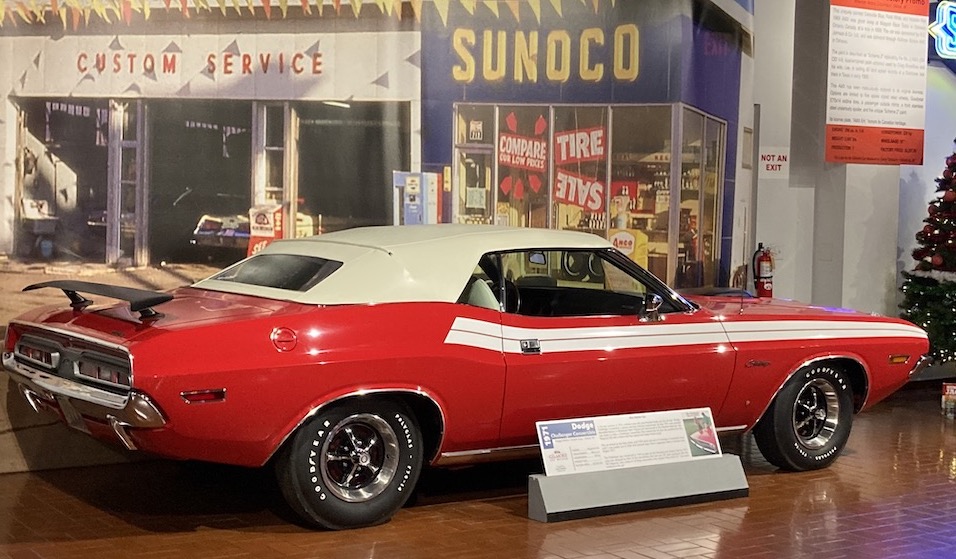
The Benz and the Challenger are the only vehicles in the massive collection in which the ‘story’ is told by a woman. There are two others that refer to women in a general sense. The 1931 Buick Victoria Coupe is displayed alongside advertising that reflects the manufacturer’s efforts to promote this particular vehicle to women drivers; as the ad reads, the synchro-mesh transmission ‘makes every woman an expert driver, enabling her to shift gears smoothly and easily at any speed.’ The display for the 1915 Rauch & Lang Electric noted that both Mrs. Henry [Clara] Ford and Mrs. Thomas [Mina] Edison drove electric vehicles. Whether this was the women’s choice or whether they were ‘encouraged’ to drive electrics by their husbands is impossible to say.
The majority of reference to women in the museum is related not to cars, but to fashion. There are photographs, advertisements, display cases, female mannequins, and signage which link women to styles of the respective eras scattered among the various automotive displays.
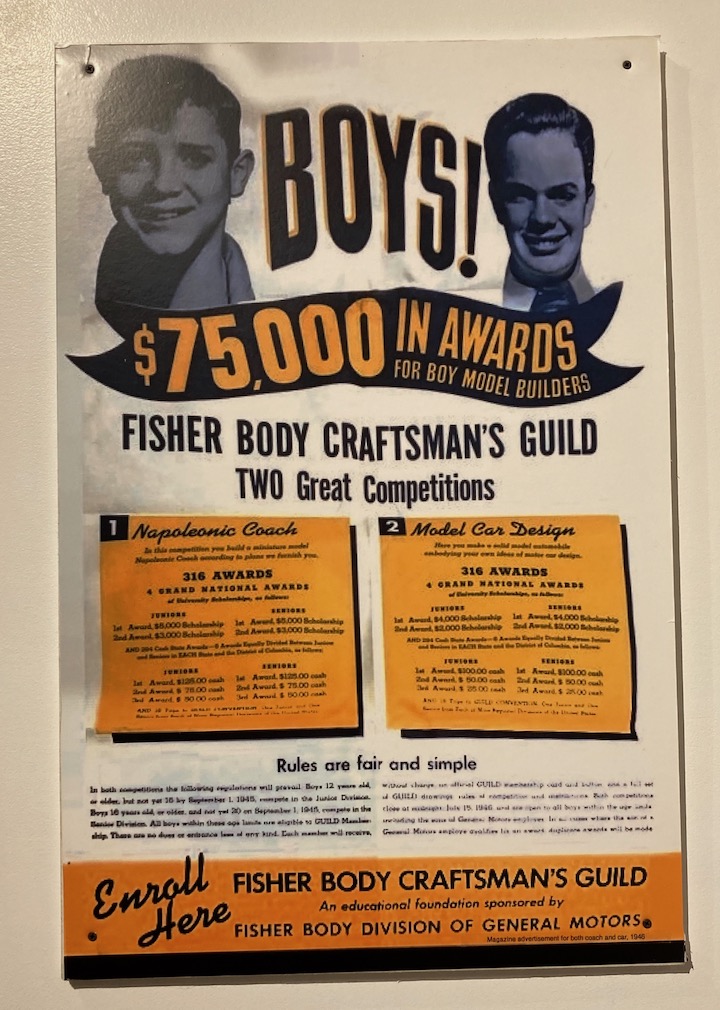
What I found most disconcerting in my tour of the museum was the Automotive Activity Center geared toward the young car enthusiast, an enclosed area with auto-related play activities and information. Two of the walls were devoted to a display of vehicle designs produced by winners of the Fisher Body Craftsman’s Guild competition held from the 1930s to 1960s. This national auto design contest, sponsored by the Fisher Body Division of General Motors, ‘helped identify and nurture a whole generation of designers and design executives’ (Jacobus 2). As the poster on display indicates, the competition was for boys only. This production of male technological knowledge, Ruth Oldenziel writes, ‘involved an extraordinary mobilization of organizational, economic, and cultural resources’ (139) in which ‘girls found themselves excluded as a matter of course’ (141). A large collection of early automotive toys fills two display cases on an adjoining wall. Of the hundreds of toy cars on display, only two feature a female behind the wheel. A young girl entering this activity center would not see herself; rather, she would walk away with the impression that the automotive world is a male one, reinforcing the gendered assumptions that have permeated car culture for over 100 years.
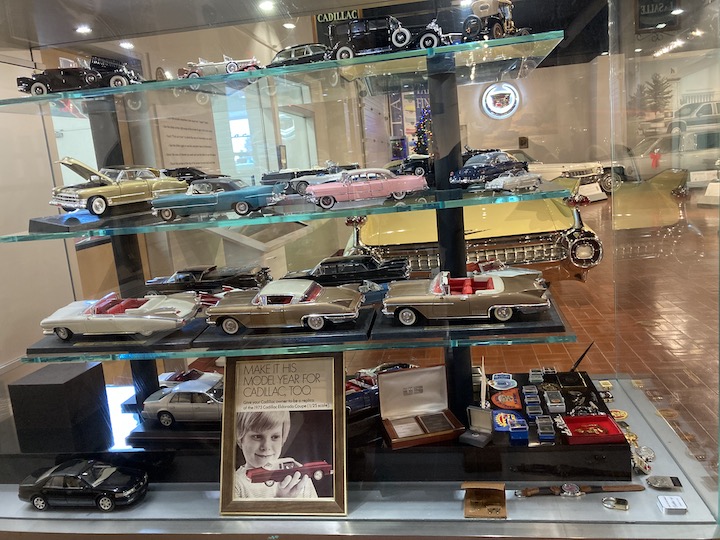
Certainly much of women’s invisibility in the collection can be attributed to the original intentions and interests of its founder. The Gilmore is, in fact, a reflection of an older [white] male sensibility, an expression of an automotive education in which women were absent or excluded. However, what is distressing is that in the 60 years of its existence, very little effort has been made to integrate women into the history of the automobile. While the museum claims to tell the story of America through the automobile, it is a story in which women are most often absent in other than the most stereotypical of ways.
Jacobus, John. The Fisher Body Craftsman’s Guild: An Illustrated History. Jefferson NC: McFarland, 2005.
Oldenziel, Ruth. “Boys and Their Toys: The Fisher Body Craftsman’s Guild, 1930-1968, and the Making of a Male Technical Domain.” In Boys and Their Toys: Masculinity, Class and Technology in America, edited by Roger Horowitz, New York: Routledge, 2001: 139-168.

